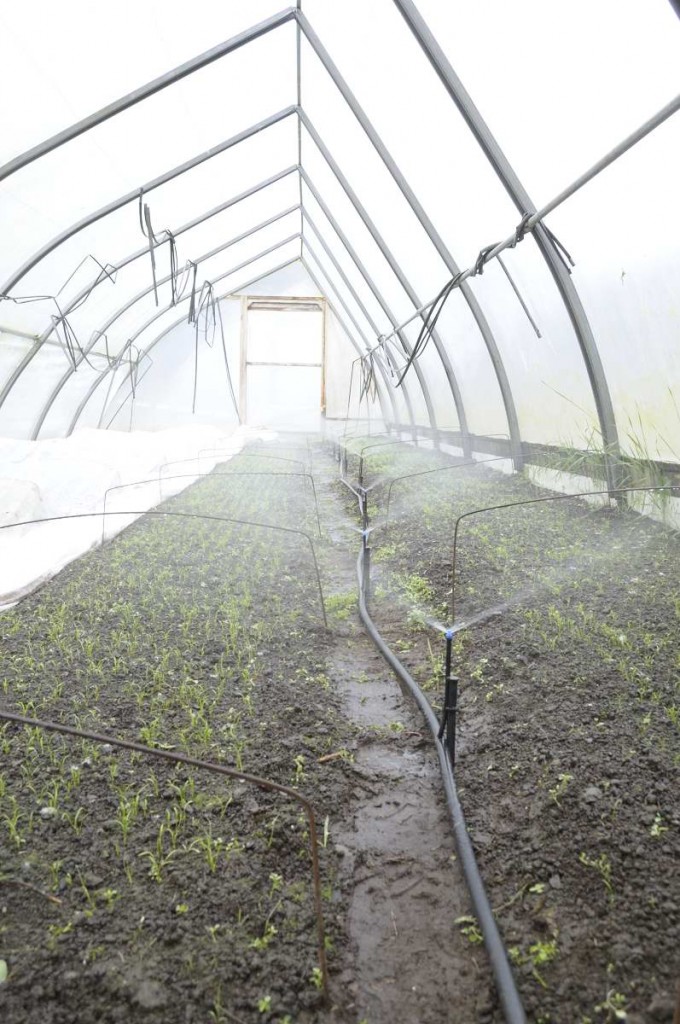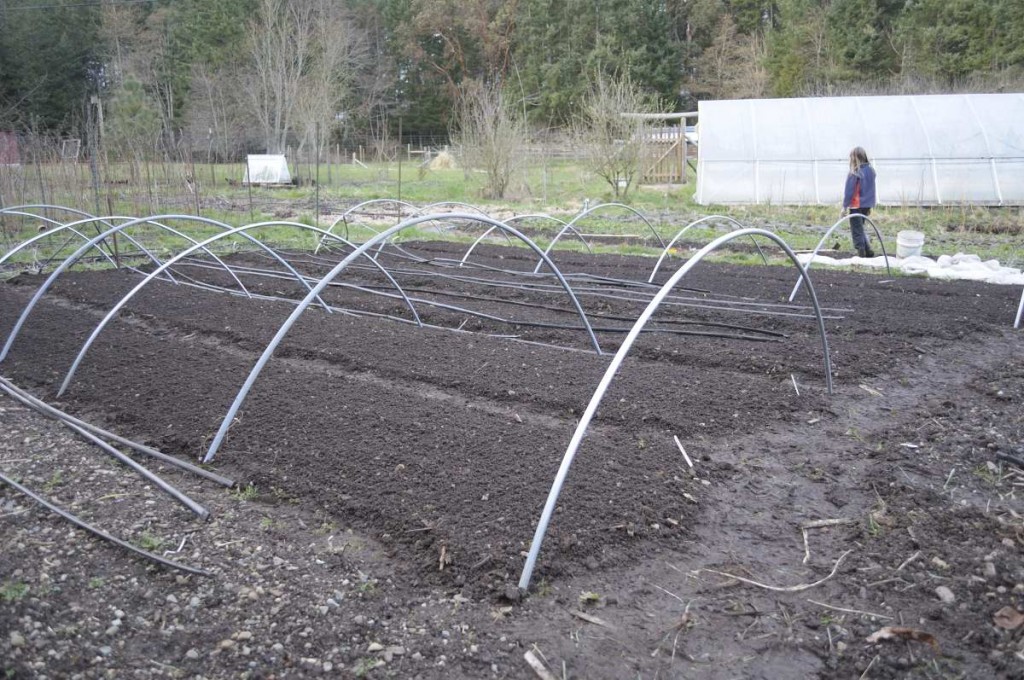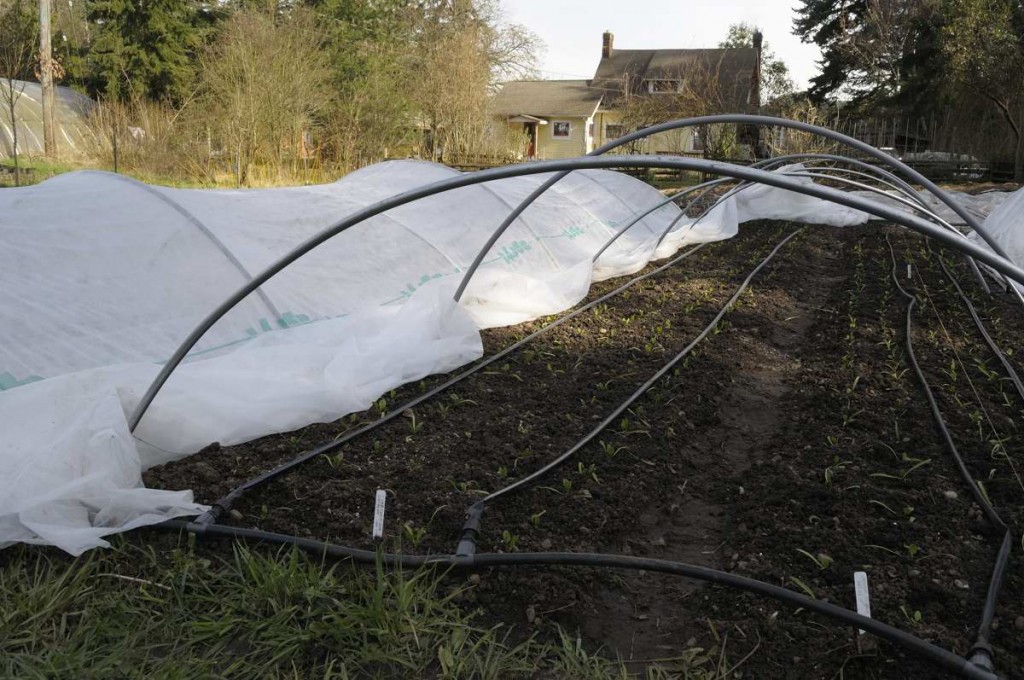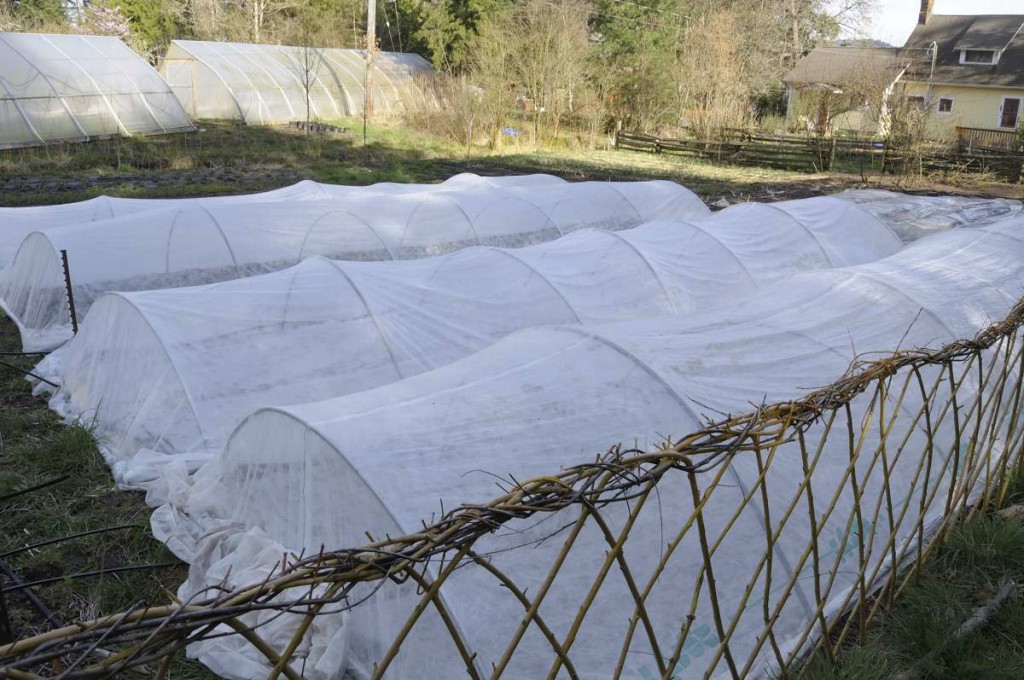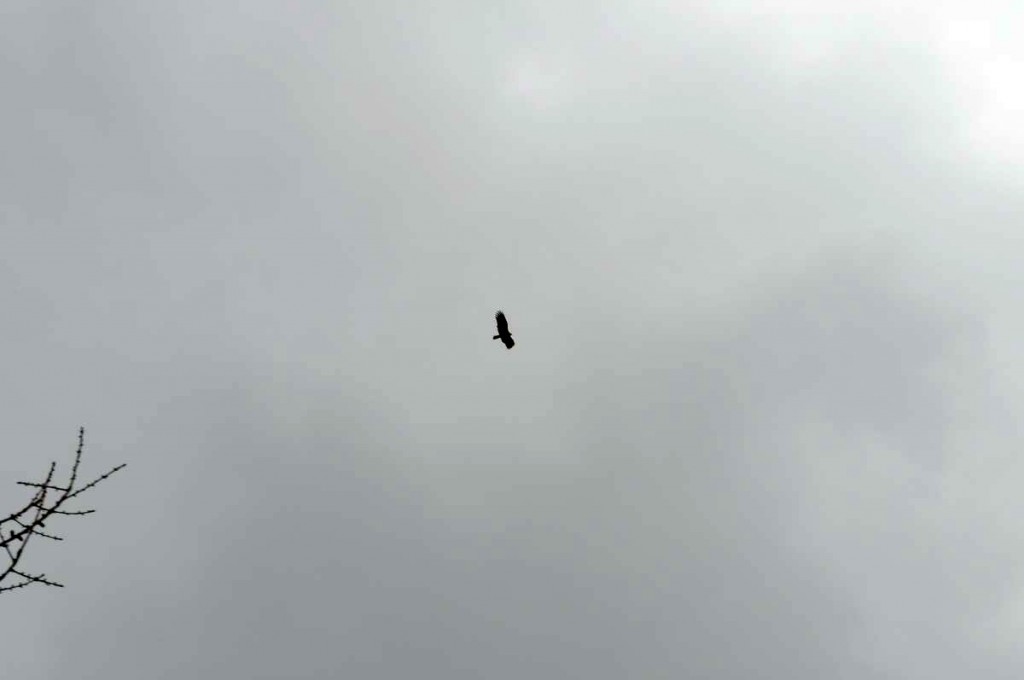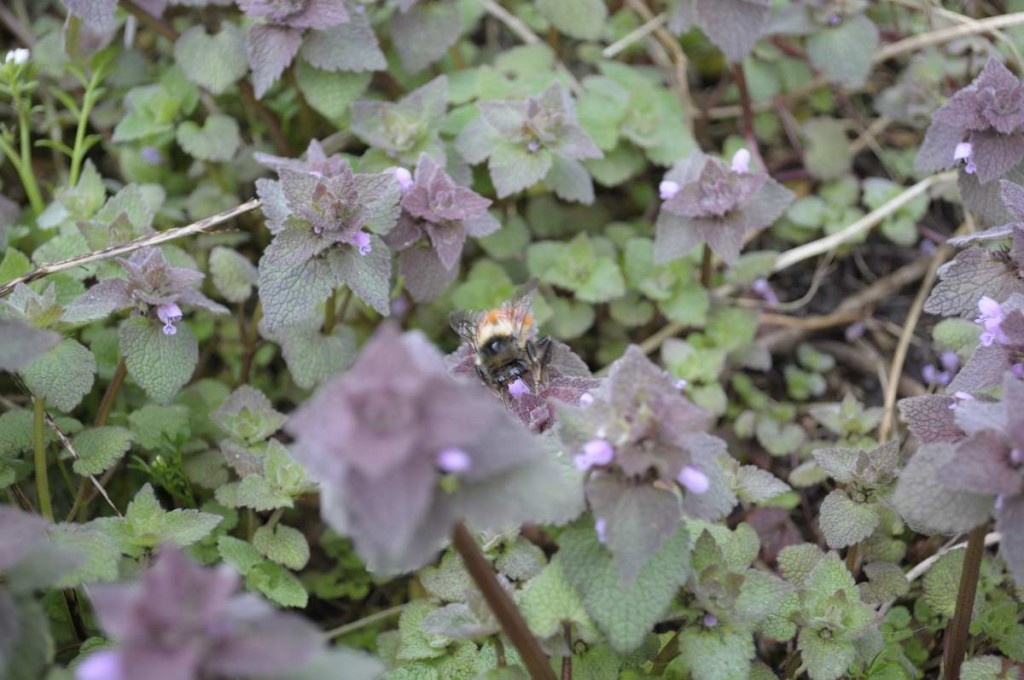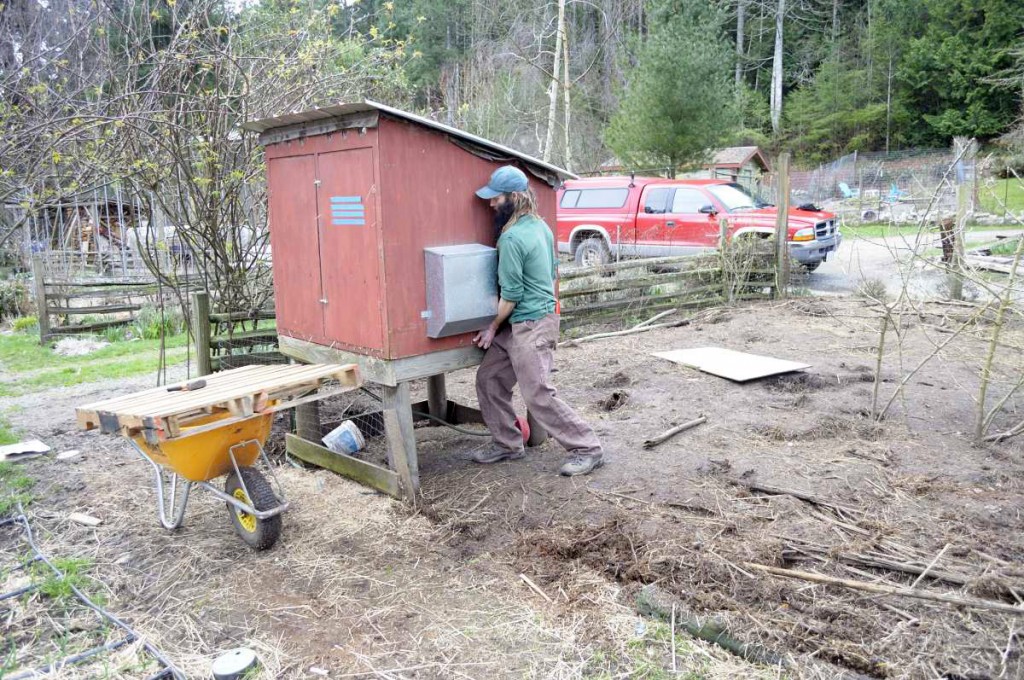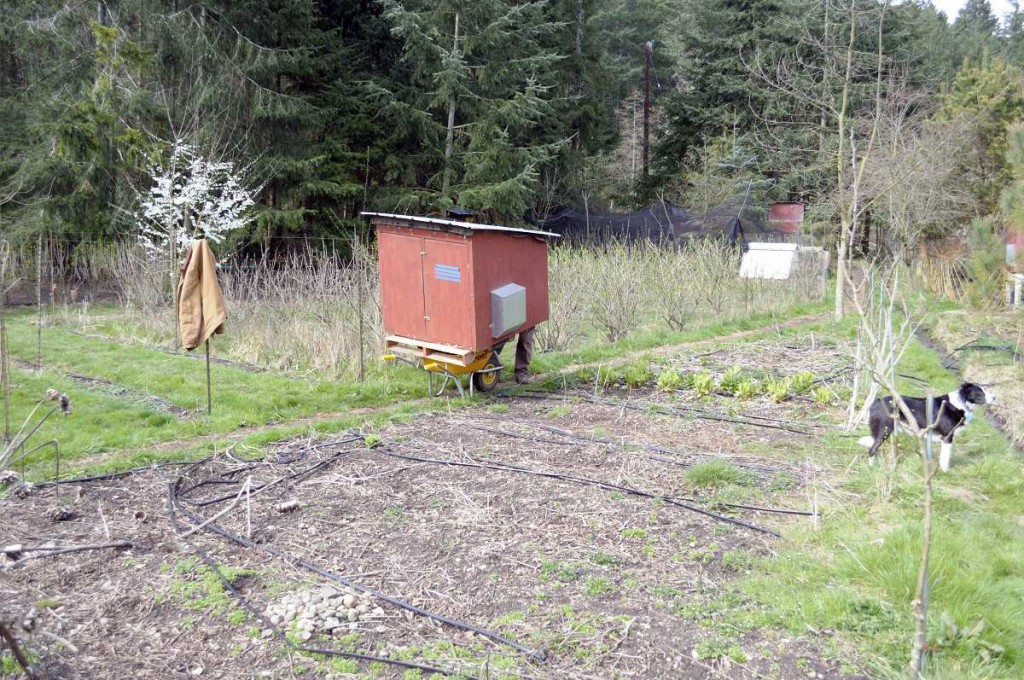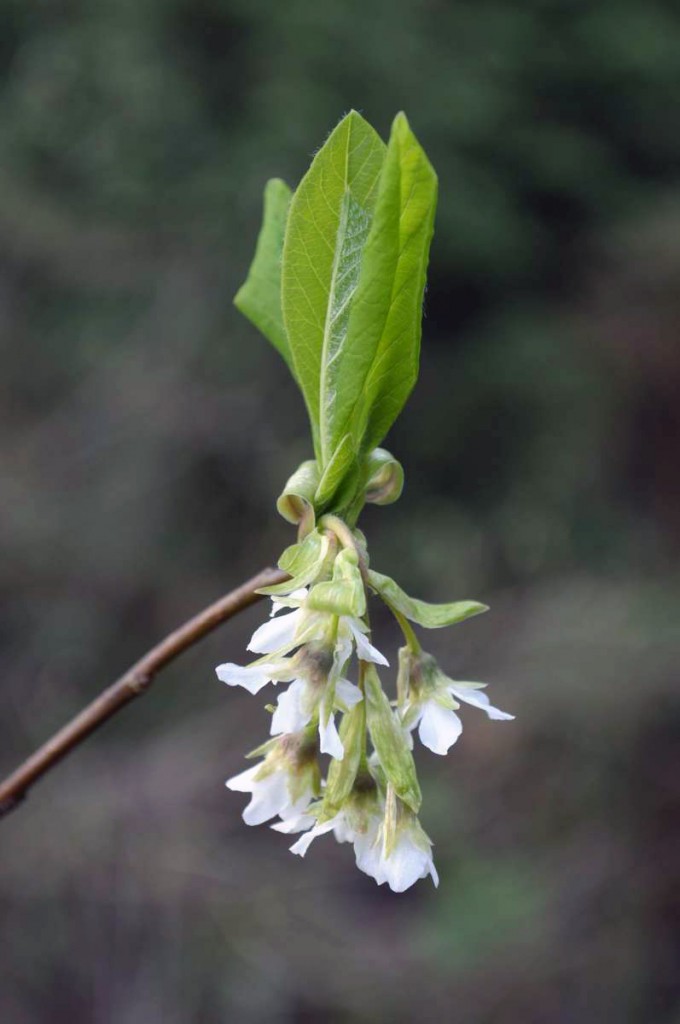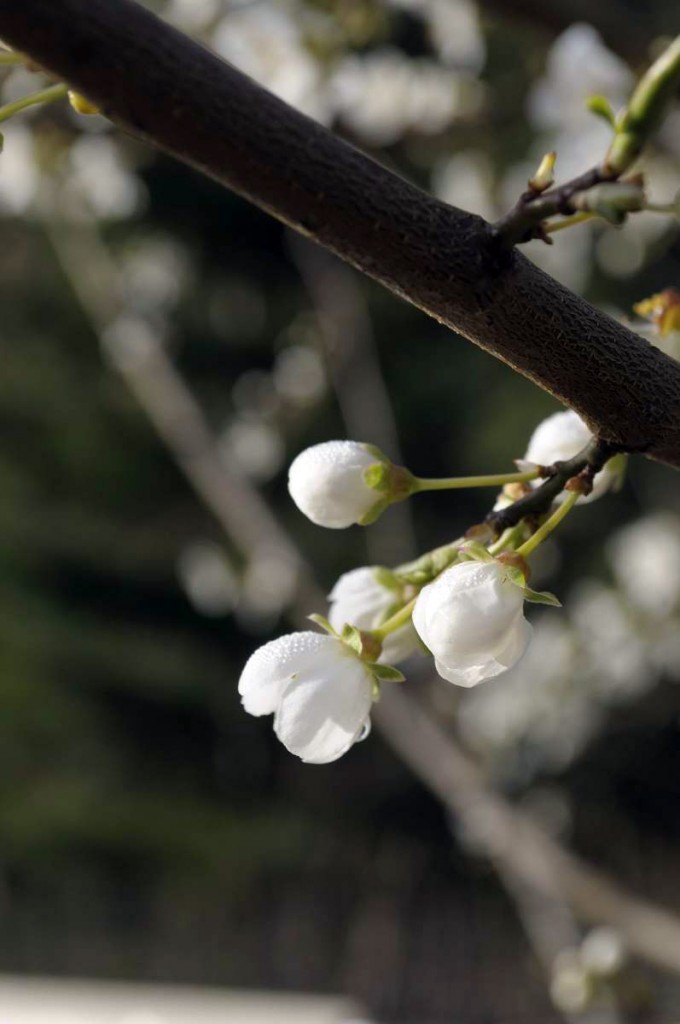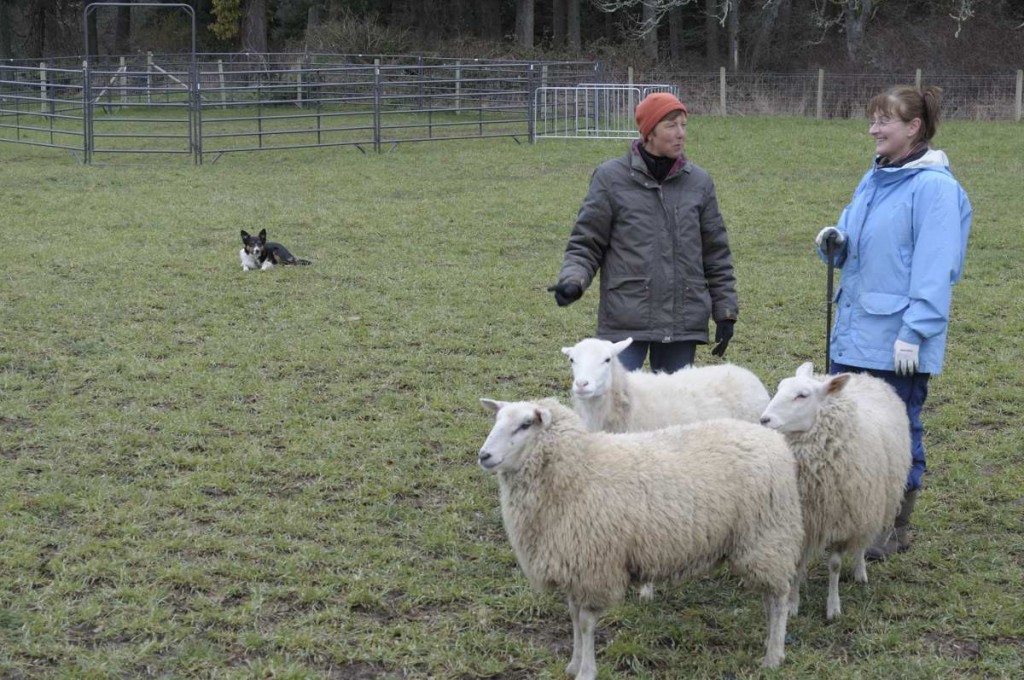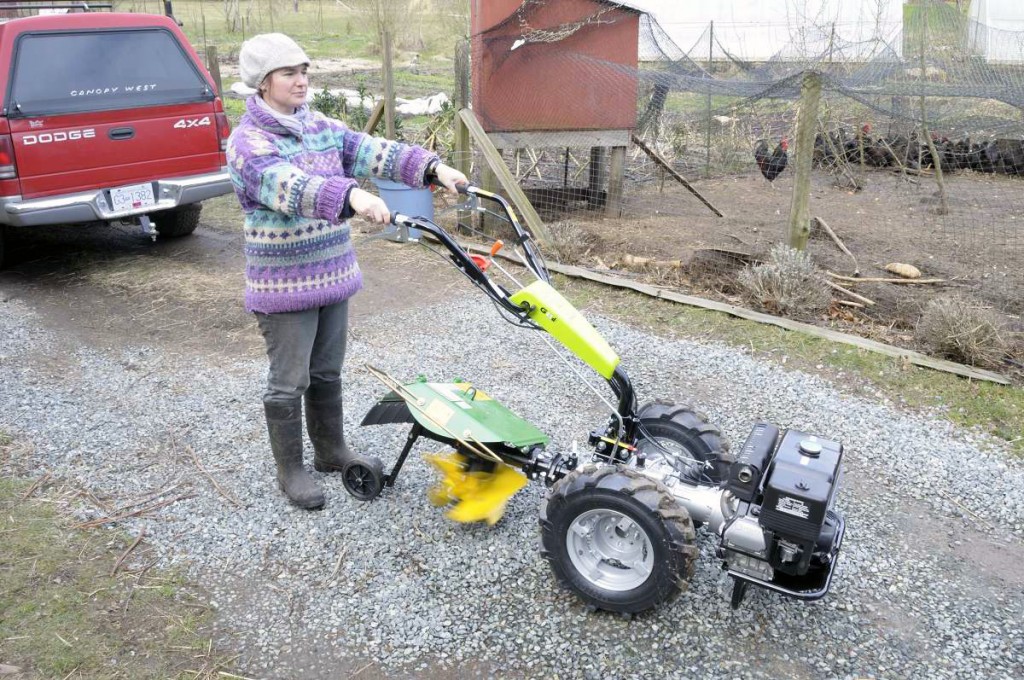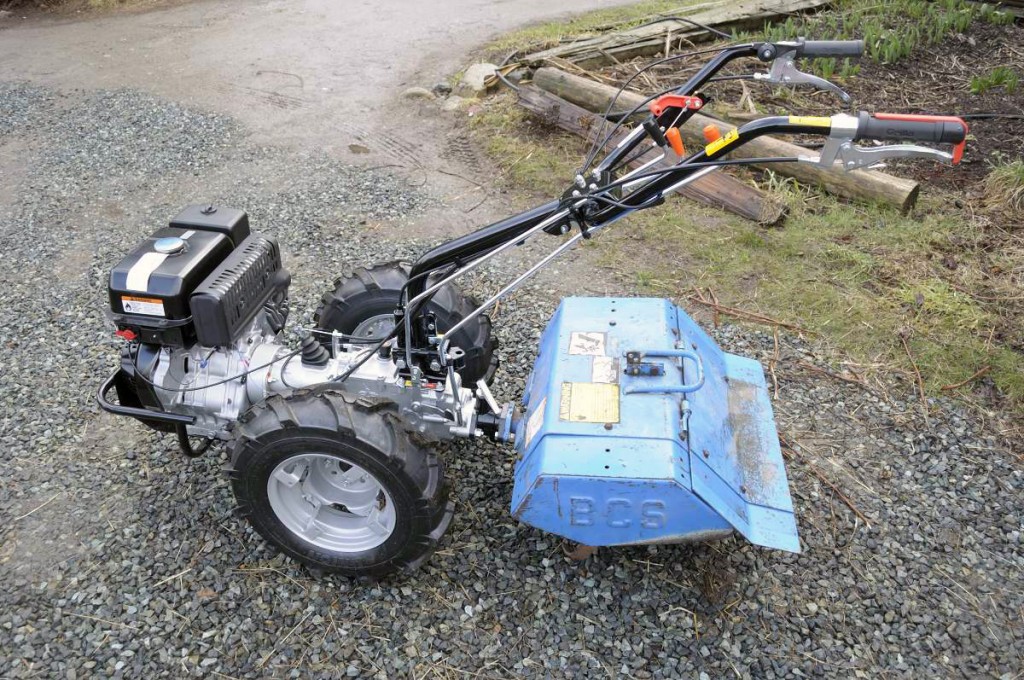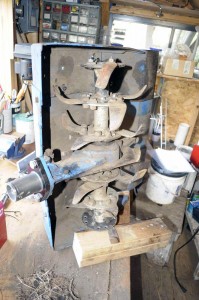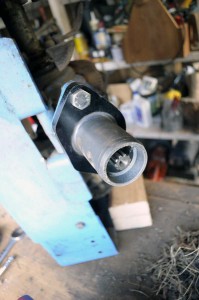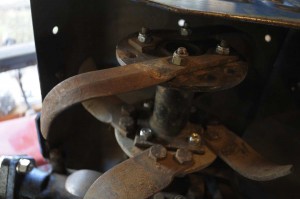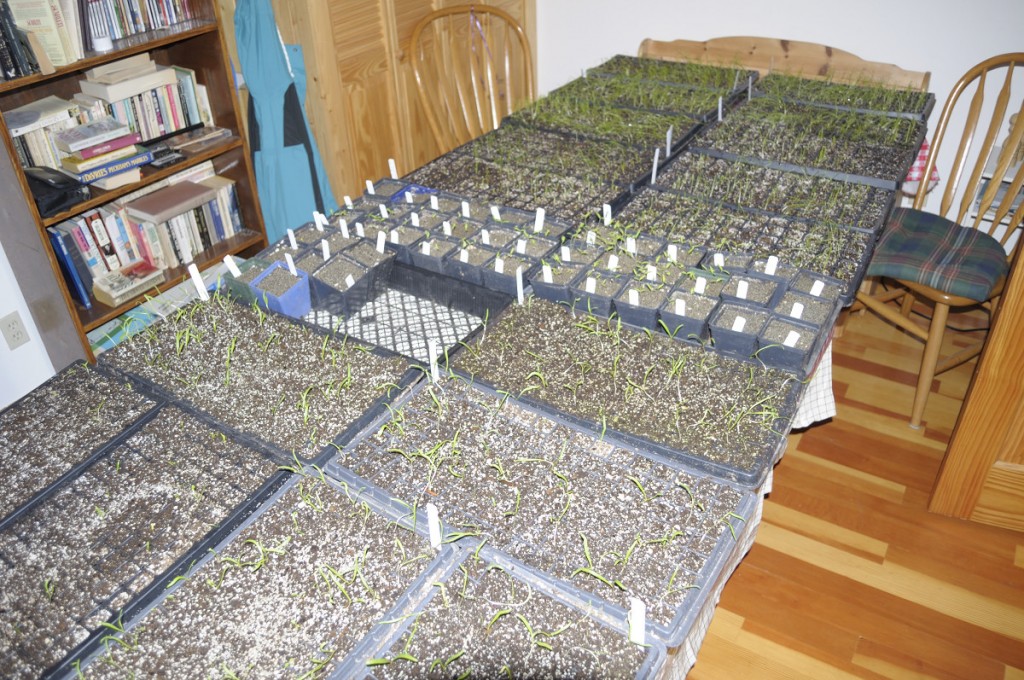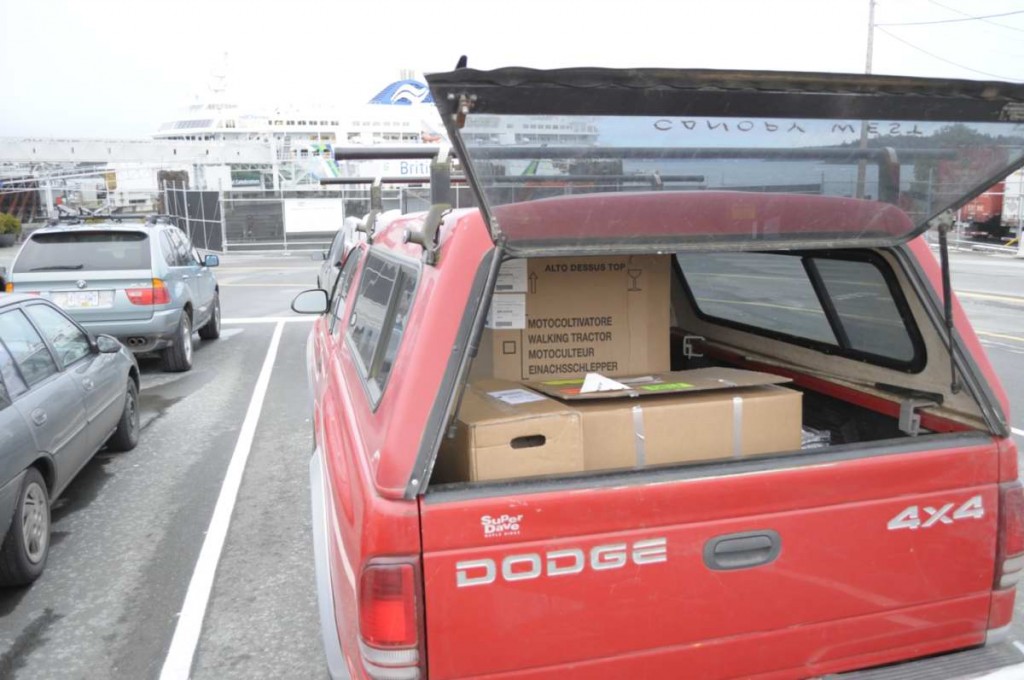Happy to report that we have had good germination of the carrots in the greenhouse and were successful in preventing excessive losses to slugs and weeds.
Daily Farm Foto
Homemade “Quik” Hoops in Action
We put our recently built home-made tube bender to the test, bending a number of 10′ 1/2″ dia electrical conduit to form the rigid framework for a series of short, 2 bed-wide remay tunnels. To reduce costs we “laced” the bent galvanized conduit with weaker (and cheaper) UV stabilized 1/2″ PVC conduit (the darker grey hoops in the 1st photograph). The tunnels have been planted with a variety of cool-weather crops including: 3 types of mizuna, mibuna, salad turnips, radish, arugula and transplanted spinach starts.
More Signs of Spring
Moving Chickens
For the first time in seven years (basically since we’ve been on the farm), chickens have been moved outside of the main crop producing area. After rotating them around to improve our poor soils we have finally reached the point at which we can now amend the soils with compost and composted manure.
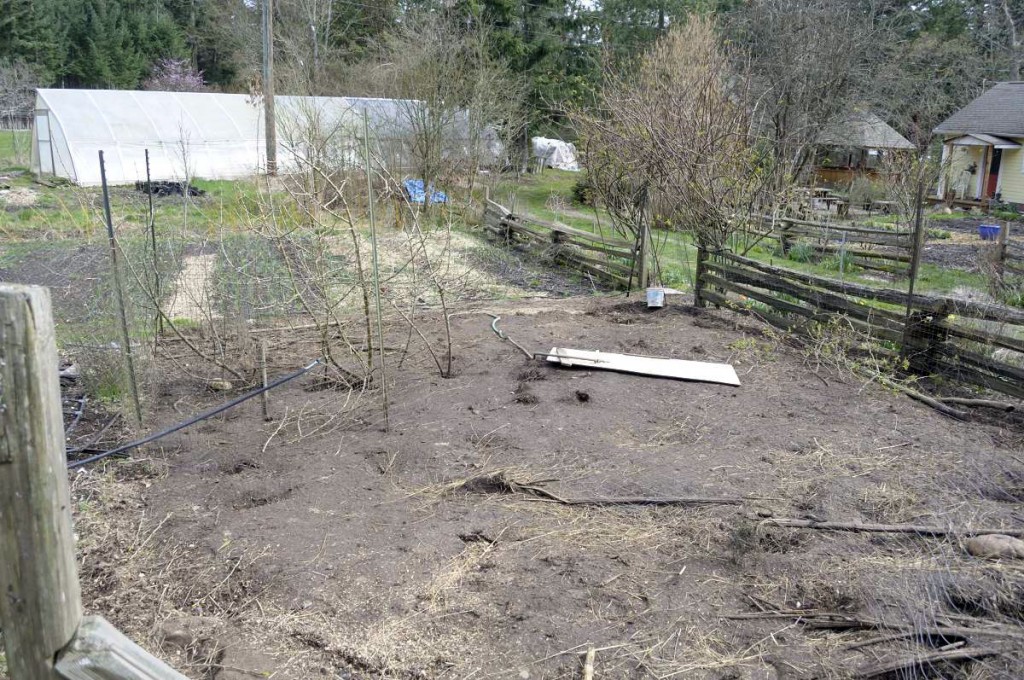
The scruffy appearance of ground that has supported 20 - 30 chickens for a period of a year. Total depth of accumulated organic matter over that time is about 8 - 10 inches.
Fortunately the move wasn’t a great distance as the coops are a bit awkward and heavy (when full of chickens) to move. Not very portable but they are very mink proof – due to their 3′ elevation above the ground.
Training Finn
Michelle training her dog Finn under the watchful and helpful eye of Julie Carter. Julie runs West Coast Canine Academy, a local dog training business specializing in agility, herding and obedience training.
Our Gillo has Landed – Part III
Here she is being modeled by our friend Jodi Schamberger with the Berta Franco rotary plough attachment. Note the spinning blades. The plough has a vertical shaft with four yellow spiral blades -essentially the ploughshares – that turn at approximately 300 rpm. As the tractor pulls the plough forward, the plough cuts into the soil and immediately centrifugally discharges and apparently also inverts it to the side. According to the literature “in a single pass through sod, the plow will leave 10-12 inches of worked soil.” This remains to be seen. I have heard that for compacted areas it helps to have them initially ripped with a tractor before using the plough.
One of the main reasons we purchased this type of implement is because it supposedly work tough, rocky soils and because the soil is not trapped under a hood and repeatedly pulverized – which is what happens with a tiller – the soil’s structure is not beat to death and the one can avoid creating a tiller pan. Take a look at the following video to see the beast in action.
I’m looking forward to our soils drying out so we can put ‘er to work and see if she lives up to the hype.
Our Grillo has Landed – Part II
Spent part of the afternoon putting our new Grillo (grillo is Italian for cricket ) together, getting her started, and attaching the newly expanded BCS tiller box. Everything went smoothly. She purrs like the cricket that she is. Can’t wait to put her to work.
Cold Weather
This afternoon the recent cold snap forced us to temporarily bring most of our young seedlings indoors. With high outflow winds predicted overnight, we worried that a potential power outage (something that happens quite regularly here during winter storms) would snuff out the life-giving heat on all of our electrically-heated propagation benches. At this point we can’t really afford to loose the plants that we’ve started. All we can do now is hope that the weather improves.
These are the kind of challenges you face when you push the envelope. You have to plan for the potentiality of failure, which keeps life interesting!
Our Grillo has Landed – Part I
Just returned from picking up our new Grillo 85D walk-behind tractor and Berta rotary plow from the shipper in Blaine WA. I am very excited about opening it up and putting it all together. However, the snow today was a reminder that it is not quiet spring yet.
Big kudos to Joel and Chris at Earth Tools for putting the tractor package together for us, to R & L Carriers for shipping it across the US in great time, to Kevin Powell of KP Transport and Belle Rucker of A & A Contract Customs Brokers for being so helpful receiving and storing the package (Kevin especially), and finally to the pleasant and helpful folks at US and Canada Customs. So many things could have gone wrong and didn’t…
That all said, I still have to open the package and get the thing put together and started. Stay tuned!
Along with the tractor I also received some irrigation supplies from DripWorks and picked up our annual seed order from West Coast Seeds. I’ll be writing about both of these companies in future posts.
